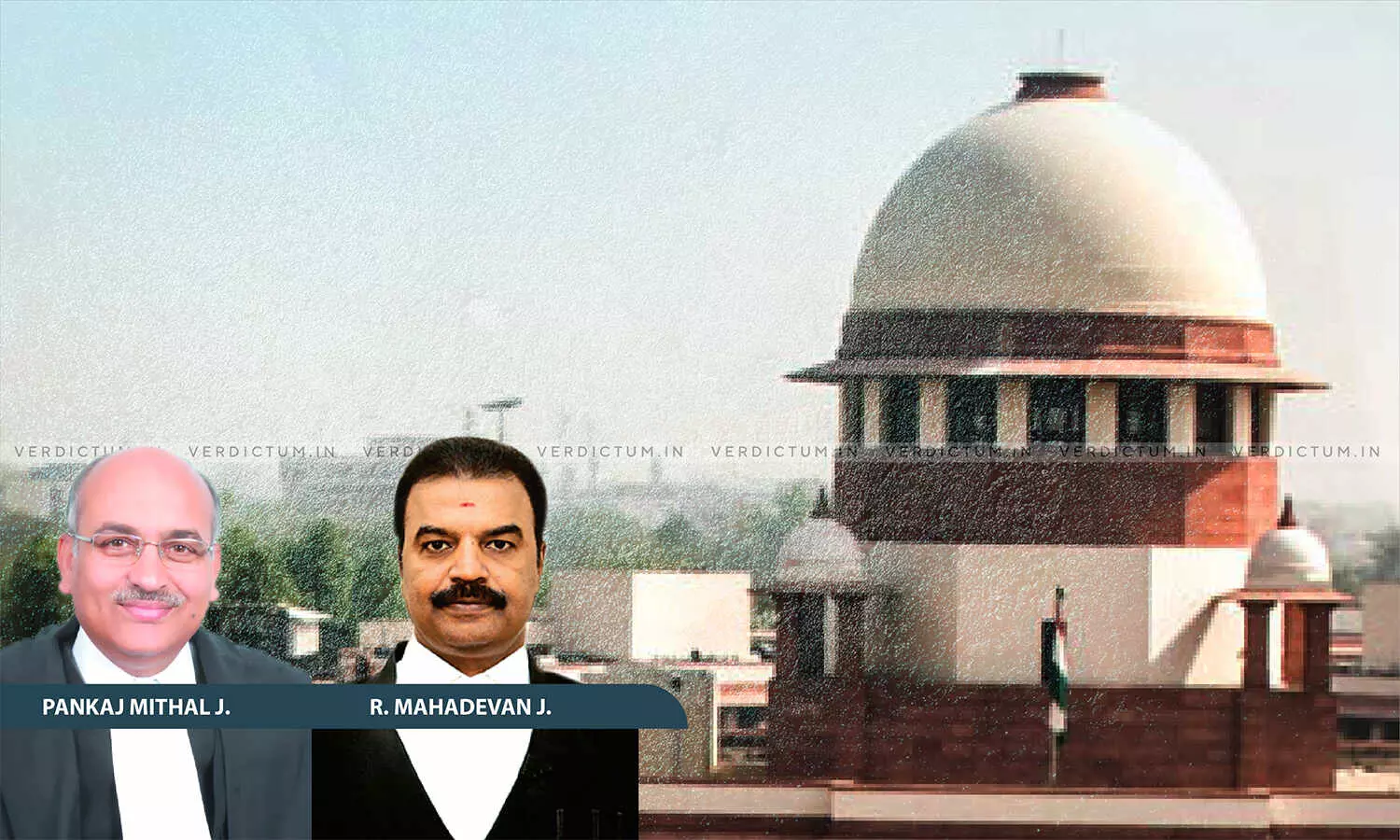
Only Expression In Clear Words Contained In Instrument Or Document Must Be Considered & Not Surrounding Circumstances: SC
 |
|The Supreme Court observed that, only expression in clear words contained in the instrument or document must be considered and not the surrounding circumstances.
The Court observed thus in a civil appeal filed by the legal representatives against the judgment of the High Court by which the Trial Court’s order was reversed and the suit was decreed.
The two-Judge Bench comprising Justice Pankaj Mithal and Justice R. Mahadevan elucidated, “It is a cardinal principle of interpretation that where the language employed in the instrument is clear and unambiguous, the common literary meaning ought to be assigned in interpreting the same and one should not fall back on any other inference. Only the expression in clear words contained in the instrument/document must be considered and not the surrounding circumstances. In short, literal construction must be considered first, rather than going into the intention behind what is said in the instrument/document if the language of the instrument is clear and unambiguous.”
Advocate S.K. Sharma appeared on behalf of the appellants while Senior Advocate Gaurav Agrawal appeared on behalf of the respondents.
Brief Facts -
A plot of land was divided in two equal halves to the plaintiff (respondents) and defendants (appellants) vide separate registered sale deeds. Portion A was sold to plaintiff and Portion B to defendants. Since portion B was in the back and had no access to the Battery Lane, the sale deed of the plaintiff categorically provided that she would leave a 15 feet wide common passage on side of portion A for the common use of the owners of portions A & B both. However, in the sale deed of the defendants, there was no similar stipulation that they would also have to leave any such passage, much less to be used by the owners of portion A.
In 1991, the plaintiff filed a suit for permanent injunction, alleging that the 15 feet wide common passage was not the passage adjoining only portion A but it also included the passage running across the portion B. The suit of the plaintiff being represented by her heirs and legal representatives (respondents) for the decree of permanent injunction in respect of the use of passage, more commonly described as ‘common passage’, was dismissed by the Trial Court, but in appeal, the judgment and order of the Trial Court was reversed and the suit was decreed. Resultantly, the defendants and their legal representatives (appellants) have preferred an appeal before the Apex Court.
The Supreme Court in view of the facts and circumstances of the case, said, “Upon the reading of the entire sale deeds and even considering the map attached thereto, we are satisfied that the court of first instance has rightly interpreted the two documents to conclude that the common passage referred thereto is only in respect of common passage marked in the letters X-Y as this was the passage supposed to be left aside by the plaintiff-respondents, the owners of the portion A for common use by both the parties, with no stipulation that the owners of the back portion are also to leave a similar passage in their portion for use by the other party.”
The Court further noted that the first appellate Court completely misconstrued the two sale deeds and simply for the reason that the passage Y-Z and Z-Z1 were in alignment with the passage X-Y left by the plaintiff-respondents for common use held that the entire passage from X-Z1 is a common passage for the use of both the parties, something which is completely erroneous and in conflict with the clear recitals of the sale deeds.
“The first appellate Court has unnecessarily laid undue emphasis on the words ‘common passage’ to hold that it refers to the entire passage from X-Z1 otherwise it would defeat the whole intention behind using the phrase ‘common passage’ in the two sale deeds”, it added.
The Court said that the common passage referred to in those sale deeds and the map thereto is only in context with the common passage X-Y which was supposed to be left by the purchasers/owners of the portion A i.e., plaintiff-respondents for ingress and egress of the owners of portion B as they have no other alternative way of access to the Battery Lane or to any other road or lane.
“Since the defendants-appellants under their sale deed were not supposed to leave any such passage in the portion purchased or owned by them, the plaintiff-respondents have no right to use any part of portion B which exclusively belongs to the defendants-appellants”, it also emphasised.
The Court concluded that, there is otherwise no justification for allowing the plaintiff-respondents to have access or use of the passage Y-Z or Z-Z1 comprised in portion B as there is no access to their portion from the said passage and simply for the reason that the said passage is in alignment with the common passage X-Y, the plaintiff-respondents cannot claim any right over it.
Accordingly, the Apex Court allowed the appeal, set aside the High Court’s judgment, and restored that of the Trial Court.
Cause Title- Kamal Kishore Sehgal (D) Thr. LRs. & Ors. v. Murti Devi (Dead) Thr. LRs. (Neutral Citation: 2024 INSC 707)
Appearance:
Appellants: Advocate S.K. Sharma and AOR Krishan Kumar.
Respondents: Senior Advocate Gaurav Agrawal and AOR Pramod Dayal.